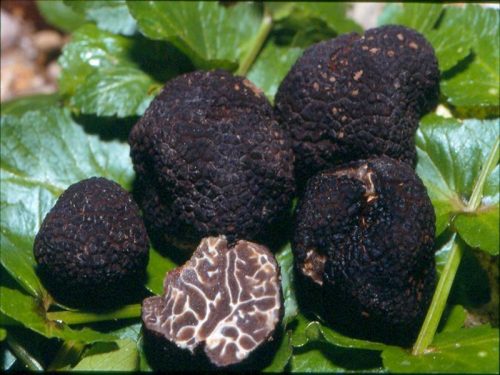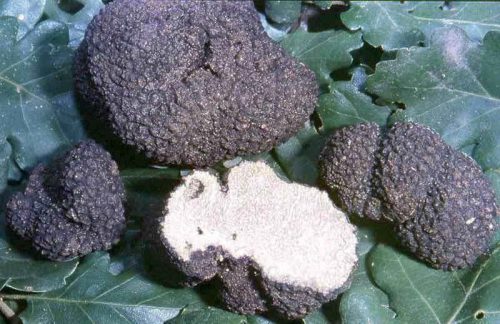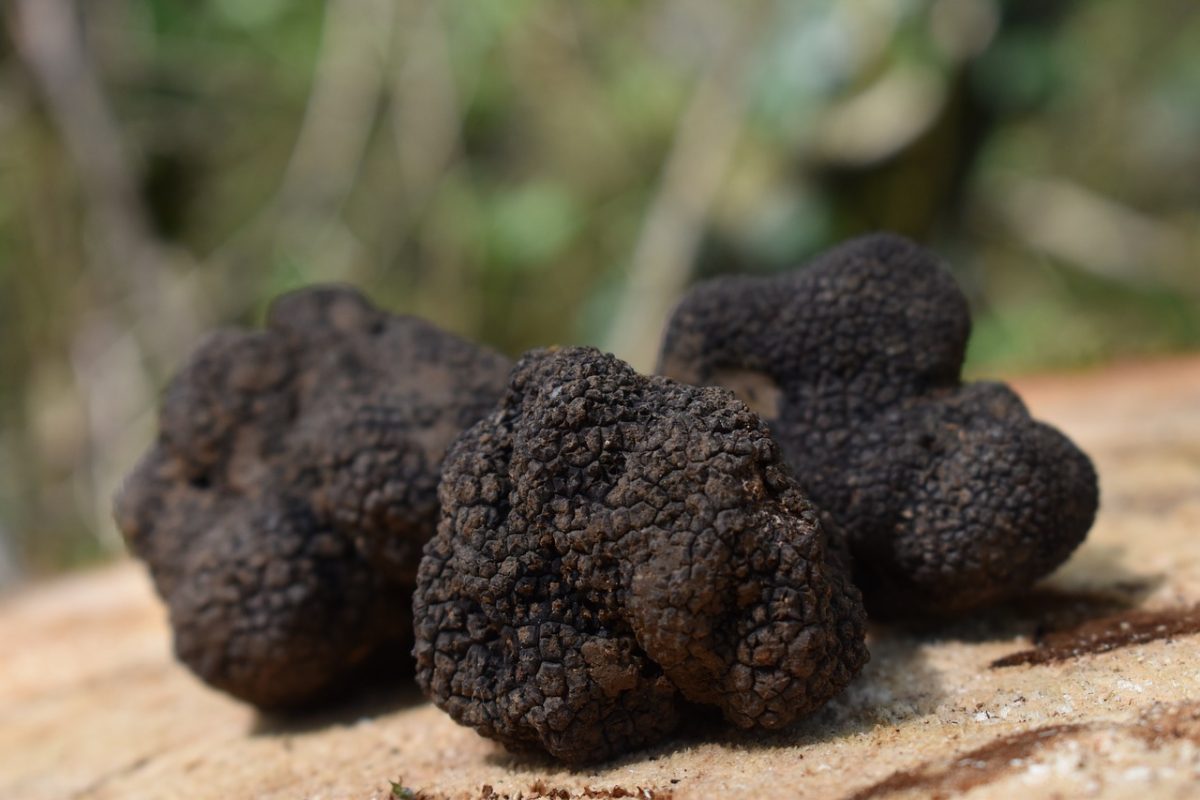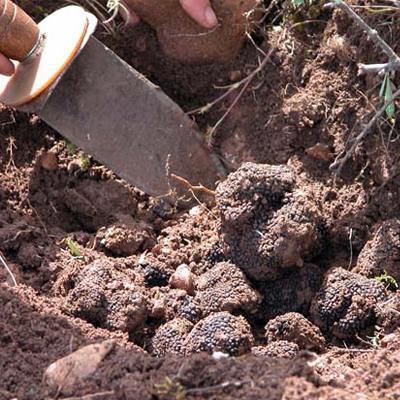Truffle mushrooms, information about cultivation technology
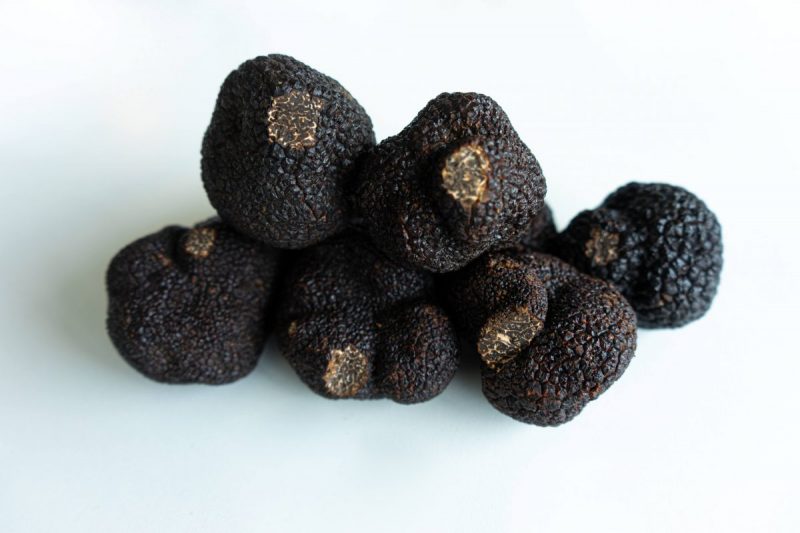
Truffle mushrooms belong to the genus Tuber, which includes several species, of which only two are edible, with high food value: Tuber melanosporum and Tuber aestivum.
Tuber melanosporum (black truffle, Périgord truffle or French black truffle.)
It has no cap and no stem. The fruit is similar to the potato tuber, round or slightly ovoid, with a diameter of 3-10 cm.
Truffles grow in the soil at a shallow depth (3-15 cm). It prefers permeable, well-aerated, limestone-rich soils exposed to the sun. It is found in deciduous forests, especially oak forests. Usually forms nests similar to potato crops. They appear in autumn-spring, from November to March.
The fruit body is tuberculate, varying in size from that of a pea to a fist, with a thick, blackish-brown, purplish-brown shell. On the outside, it is pierced by fine, branched, white veins. Truffle mushrooms have a pleasant taste.
Tuber aestivum (the summer truffle)
Resembles the previous species in shape and size. It grows in the soil at a depth of 3-15 cm. The summer truffle is found in oak forests in warm areas. It prefers soils rich in humus and limestone. Appears in numerous clumps, like potato tubers, from August to February.
The fruiting body has a thick black-blue or black-brown sheath on the surface. Inside, the mushroom is compact, white-yellow at first, and brown at maturity. On the outside, it is crossed by branched veins. It has a pleasant taste and fragrant smell.
It is grown in France, Italy, Spain, New Zealand, the USA, etc.
Ecological requirements
Nutrition is exclusively heterophilic. Truffles are mycorrhizal fungi. The mycelium of these mushrooms lives in association (symbiosis) with the roots of some plants, helping each other. The mycorrhizal plant provides the mushroom with carbohydrates, vitamins, growth stimulants, and fructification. Truffles supply the plant with nitrogen, phosphorus, and other elements in an easily assimilable form.
Truffles prefer deep, semi loamy, well-aerated, nutrient-rich, limestone-rich soils with a pH between 7.4 and 8.3.
Cultivation
The establishment of culture requires young plants, of woody species (oak, hazel species, etc.) ready mycorrhized. The mycorrhizal operation (tree-mushroom association) is performed by specialized units. Mycorrhiza comprises two phases: the first consists of inoculating woody plants with mushroom parts, (spores, mycelium), the operation performed in the laboratory. The second phase aims to obtain healthy plants with good mycorrhiza. The work can be performed in greenhouses and for larger quantities in nurseries.
Planting
The planting of mycorrhizal trees can be done in late autumn (November-December) or very early spring (February-March).
The number of plants needed for 1 ha of truffle plantation varies between 200 and 600, depending on the species used. Planting is done according to the usual techniques used in fruit growing and forestry.
After planting, the soil is worked superficially (to a depth of 5-6 cm) and the weeds around the trees are destroyed. After weed control, the soil only needs to be lightly scratched to destroy the surface crust and allow good aeration.
Depending on the rainfall regime in the area, apply irrigation with neutral or slightly alkaline water.
Harvesting
The first truffle harvest can be obtained at least 4 years after planting the mycorrhizal trees. From inoculation to fruiting takes 5-6 years and sometimes even 8-10 years. From the moment of fruiting, truffles behave like a perennial crop, which can last 30-40 and even 50 years.
Summer truffles ripen in autumn, around November, and black truffles in winter, in December-February.
Mature truffles give off a pleasant, strong smell that permeates the soil. Because of this smell, truffle crops are easily detected by dogs and pigs.
The actual harvesting is done by hand, with great care. After 10-12 years from planting, a harvest of 6-8 kg/ha/year can be obtained. After 15 years 10 kg/ha/year, and in some cases up to 30 kg/ha/year.














































































































































































































































































































































































































































